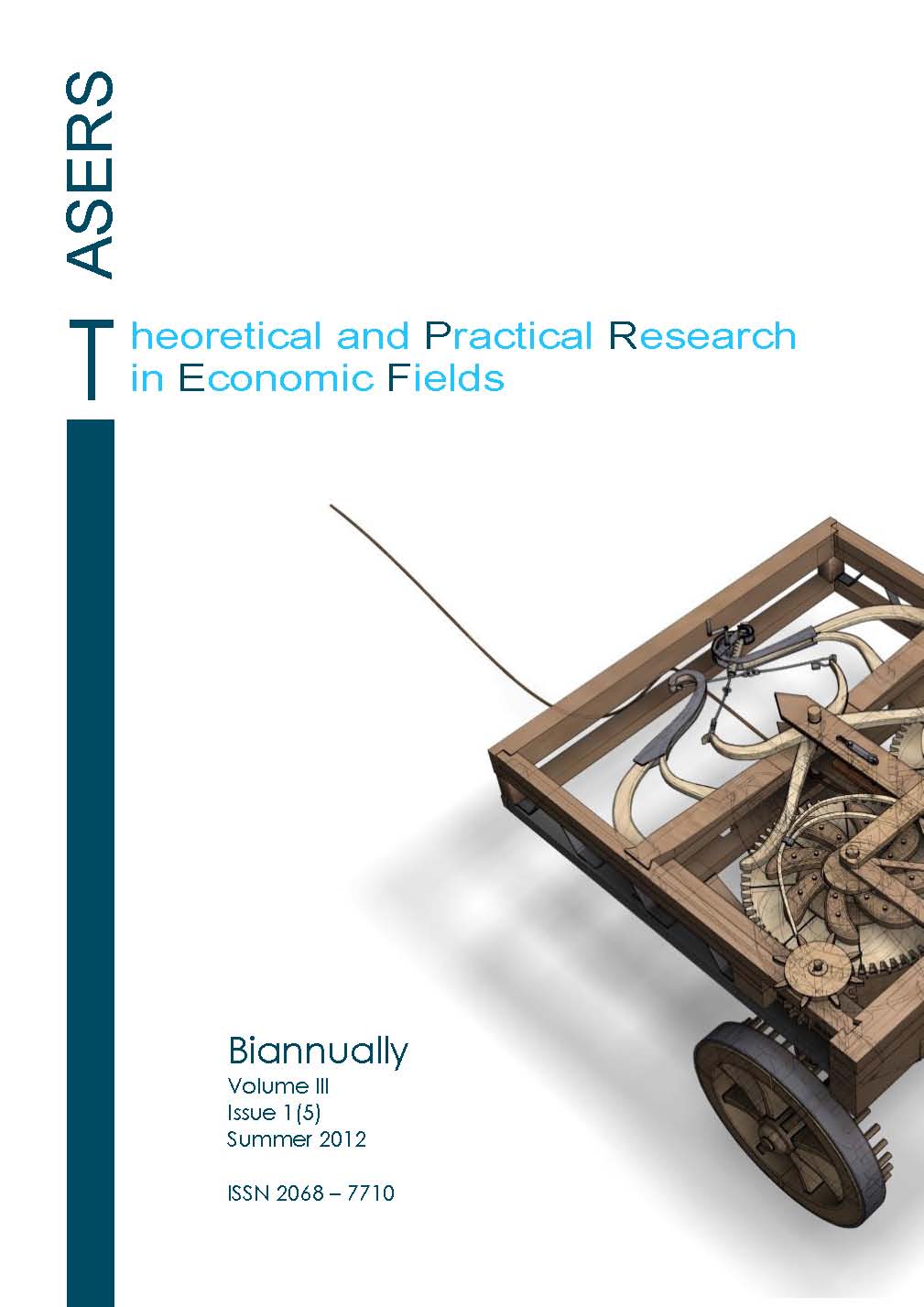MODELING UNEMPLOYMENT AND EMPLOYMENT IN ADVANCED ECONOMIES: OKUN’S LAW WITH A STRUCTURAL BREAK
Abstract
Using a modified version of Okun’s law, we have modeled the rate of unemployment and the employment/population ratio in several largest developed countries: Australia, Canada, France, Japan, the UK, and the U.S. Our results show that the evolution of the (un)employment rate since the early 1970s can be predicted with a high accuracy by a linear dependence on the logarithm of real GDP per capita. All empirical relationships estimated in this study need a structural break somewhere between 1975 and 1995. We argue that these breaks are of artificial nature and were caused by similar changes in measurement procedures in all studied counties: the deviation between the GDP deflator and CPI and the structural breaks in the modified Okun’s law are synchronous. Statistically, the link between measured and predicted rate of (un)employment is characterized by R2 from 0.84 (Australia) to 0.95 (Japan). The model residuals are likely to be associated with measurement errors.
References
[2] Bureau of Labor Statistics. 2006. Employment and Earnings, February 2006. Household data, http://www.bls.gov/cps/eetech_methods.pdf.
[3] Bureau of Labor Statistics. 2011. International labor comparisons, retrieved on July 20, 2011 from http://data.bls.gov/.
[4] Conference Board. 2011. Total Economy Database, retrieved on July 20, 2011 from http://www.conference-board.org/data/economydatabase/.
[5] Diamond, P. 2011. Unemployment, Vacancies, Wages. American Economic Review 101(4): 1045–72.
[6] Huang, H.C., and Chang, Y-K. 2005. Investigating Okun’s law by the structural break with threshold approach: evidences from Canada. Manchester School, University of Manchester 73(5): 599-611.
[7] Kitov, I. 2009. The Evolution of Real GDP Per Capita in Developed Countries, Journal of Applied Economic Sciences IV 1(8): 221-234.
[8] Kitov, I. 2011. Okun’s law revisited. Is there structural unemployment in developed countries? MPRA Paper 32135, University Library of Munich, Germany.
[9] Knotek, E. S. 2007. How useful is Okun’s Law? Federal Reserve Bank of Kansas City Economic Review 4th Quarter: 73-103.
[10] Malley, J. and H. Molana. 2008. Output, unemployment and Okun's law: Some evidence from the G7, Economics Letters 101(2):113-115.
[11] Marinkov, M., and Geldenhuys, J-P. 2007. Cyclical Unemployment And Cyclical Output: An Estimation Of Okun'S Coefficient For South Africa, South African Journal of Economics, Economic Society of South Africa 75(3): 373-390.
[12] Mortensen, D. T. and E. Nagypal. 2007. More on Unemployment and Vacancy Fluctuations, Review of Economic Dynamics, 10 (3), pp. 327-347.
[13] OECD. 2007. OECD Employment Outlook, Paris.
[14] OECD. 2008. Notes by Country, http://www.oecd.org/dataoecd/35/3/2771299.pdf.
[15] Okun, A.M. 1962. Potential GNP: Its Measurement and Significance, American Statistical Association, Proceedings of the Business and Economics Statistics Section: 98–104.
[16] Pissarides, C.A. 2000. Equilibrium Unemployment Theory, Cambridge: MIT.
[17] Pierdzioch, C., Rulke, J-C., and Stadtmann, G. 2011. Do professional economists' forecasts reflect Okun's law? Some evidence for the G7 countries, Applied Economics, v. 43(11), pp. 1365-1373.
[18] Tillemann, P. 2010. Do FOMC members believe in Okun's Law? Economics Bulletin 30(3): 2398-2404.
[19] Zhu, Y. 2008. Globalisation, Employment, and Wage Rate: What Does Literature Tell Us? IMK, Working Paper 07/2008.
Non-Exclusive License under Attribution 4.0 International Public License (CC BY 4.0):
This ‘Article’ is distributed under the terms of the license CC-BY 4.0., which lets others distribute, remix, adapt, and build upon this article, even commercially, as long as they credit this article for the original creation. ASERS Publishing will be acknowledged as the first publisher of the Article and a link to the appropriate bibliographic citation (authors, article title, volume issue, page numbers, DOI, and the link to the Published Article on ASERS Publishing’ Platform) must be maintained.
